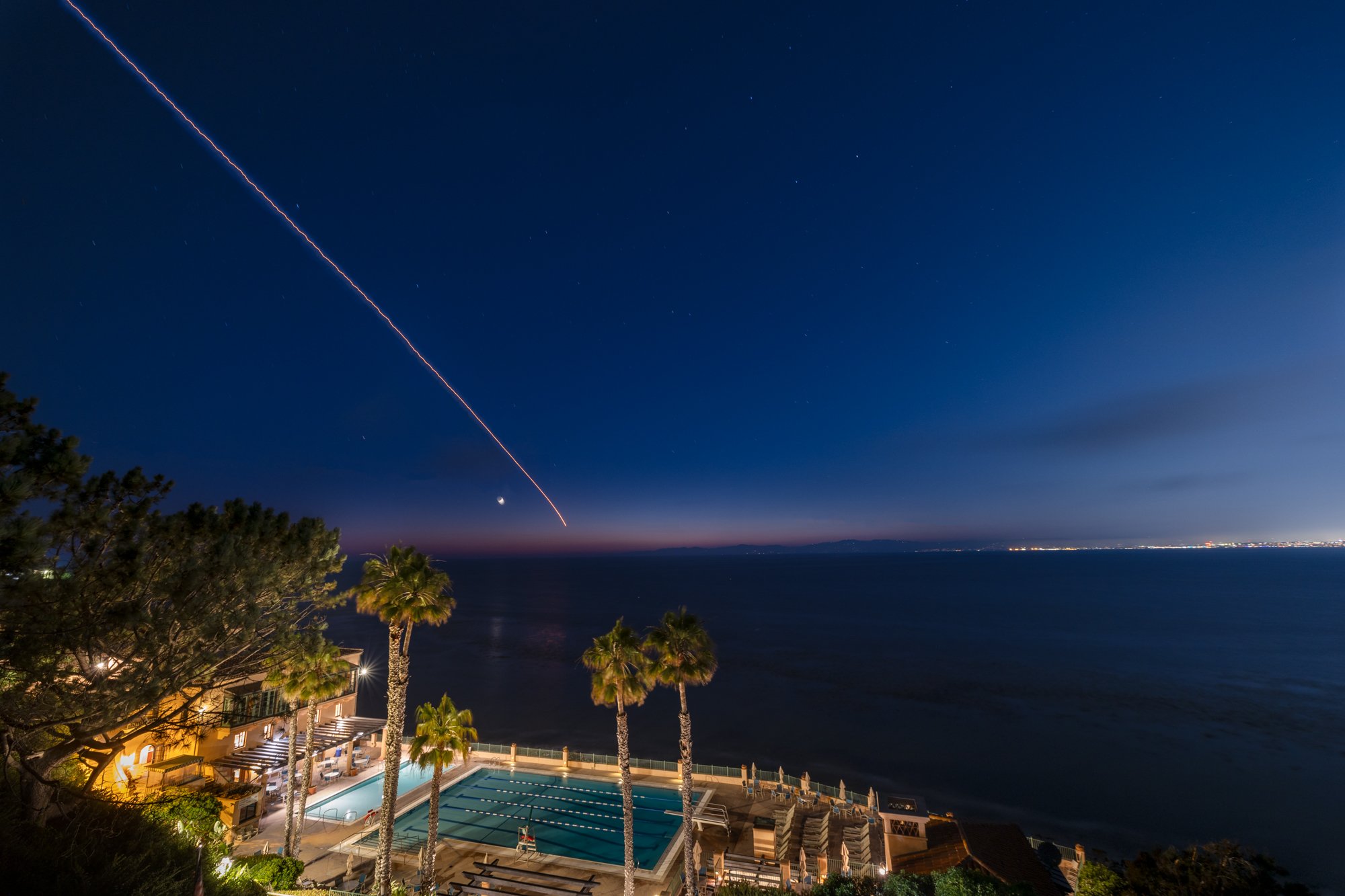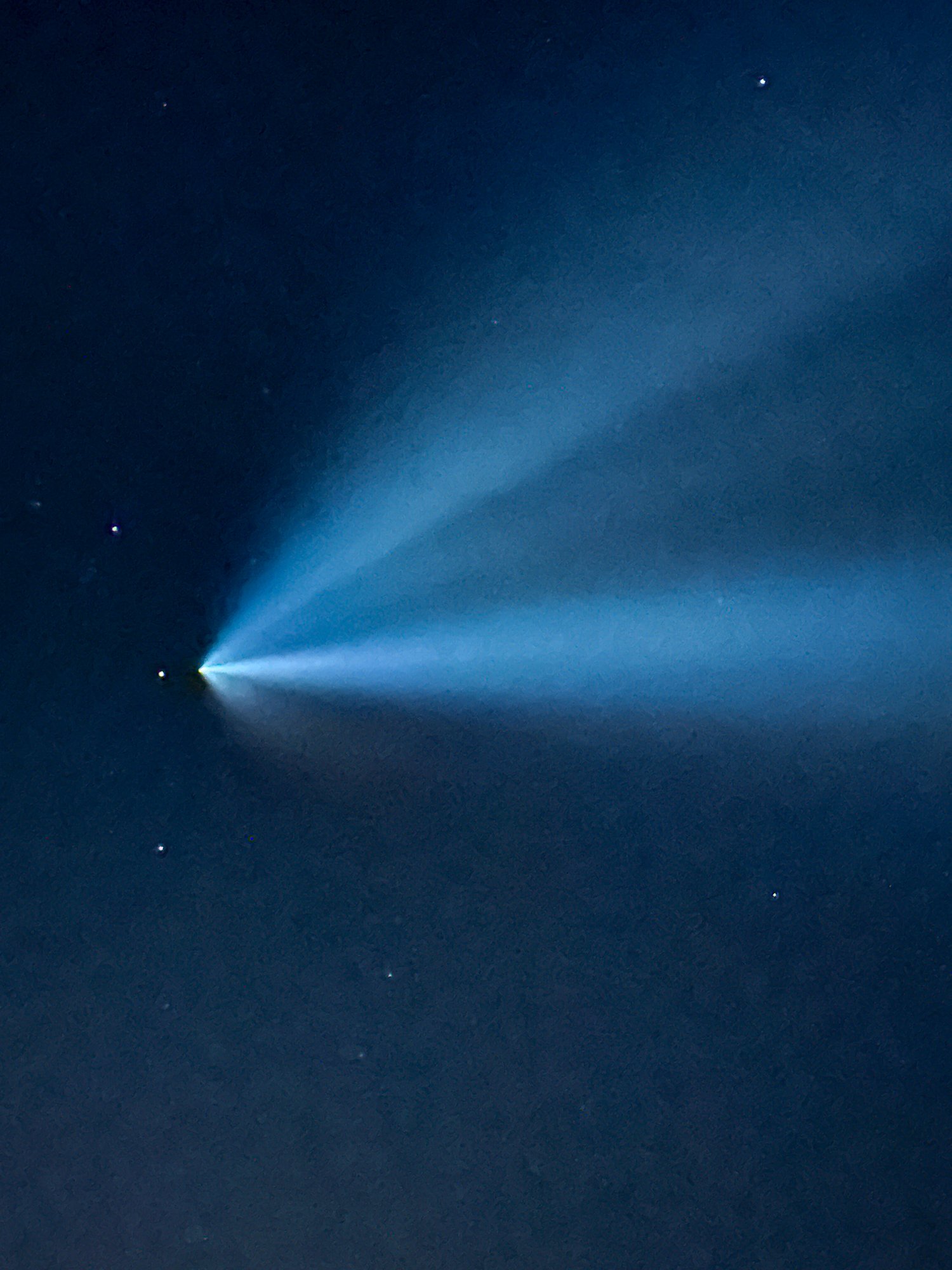Photographing a SpaceX Night Launch from Palos Verdes
LOS ANGELES | CALIFORNIA
Today, we embark on an exciting journey to capture the awe-inspiring SpaceX launch from the beautiful Palos Verdes Peninsula in California. The Palos Verdes Peninsula offers a stunning vantage point, allowing us to witness the spectacle of a rocket launch from Space Launch Complex 4 East (SLC-4E) at Vandenberg Space Force Base. To make this photographic adventure even more thrilling, we'll explore the long exposure techniques required to capture rocket launches at wide angles successfully.
Long Exposure SpaceX Falcon 9 Night Launch taken with Canon R6 Mark II
CHOOSING THE RIGHT GEAR
Before we dive into long exposure techniques, let's ensure we have the right gear for this challenging endeavor. For capturing rocket launches, a DSLR or mirrorless camera with manual settings is crucial. A sturdy tripod is indispensable to keep the camera steady during long exposures. A wide-angle lens, such as a 14-24mm or 16-35mm, will enable us to capture both the rocket's trajectory and the surrounding landscape.
PLANNING AND TIMING
Photographing rocket launches demands careful planning and timing. Check the launch schedule to ensure you're at the right place at the right time. Arrive at your spot well before the launch to set up your equipment. Take into account the weather conditions and potential light pollution from the nearby cities to ensure the best possible results.
SpaceX Falcon 9 Night Launch taken with iPhone
LONG EXPOSURE TECHNIQUES
Long exposure photography is essential to capture the mesmerizing streaks of light left behind by the ascending rocket. It adds a sense of motion and drama to the images. Here's how to master long exposure techniques for rocket launches:
Manual Mode: Switch your camera to Manual (M) mode to have full control over the exposure settings. This allows you to set a long shutter speed without the camera automatically adjusting the exposure.
Low ISO: Set your camera's ISO to its base value (typically 100 or 200) to minimize noise in the image.
Aperture: Choose a medium aperture between f/8 and f/16. This helps ensure a balanced exposure and sharpness throughout the frame.
Shutter Speed: This is the crucial element in long exposure photography. Start with a shutter speed of around 10-30 seconds, depending on the ambient light and the rocket's trajectory speed. Experiment with different exposure times to find the ideal balance between capturing the rocket's path and avoiding overexposure.
Remote Shutter Release: Use a remote shutter release or your camera's built-in timer to avoid camera shake during the exposure.
Bulb Mode: For longer exposures, switch to Bulb (B) mode, which allows you to manually control the length of the exposure by holding down the shutter button.
Composition: Pay attention to your composition, ensuring you capture both the rocket's launch and the picturesque surroundings of Palos Verdes Peninsula.
Post-Processing: After the launch, process your images in post-production to fine-tune the exposure, contrast, and colors. Be mindful not to over-process, maintaining the natural beauty of the scene.
CONCLUSION
Capturing a SpaceX launch from the Palos Verdes Peninsula is an extraordinary photography experience. The long exposure techniques we've explored will help you create stunning images that convey the magic and grandeur of rocket launches. Remember to plan ahead, arrive early, and embrace the unexpected. With patience, practice, and a bit of luck, you'll be rewarded with photographs that tell a captivating story of mankind's journey into the stars. Happy shooting!
SpaceX Falcon 9 Night Launch taken with iPhone


